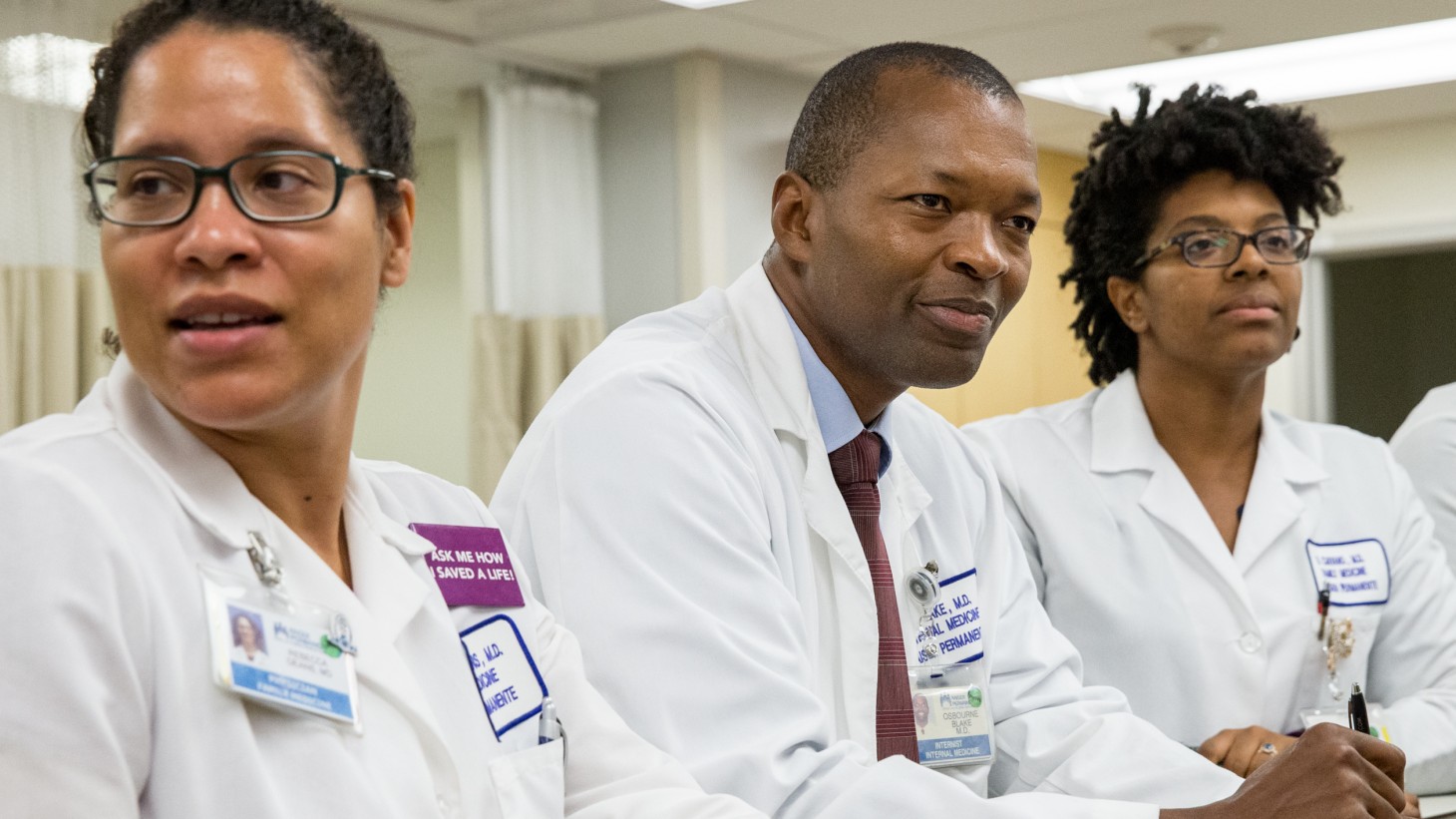Hank Winter 2016
See the whole issueThe Difference Diversity Makes

Southern California physicians Rebecca Deans, Osbourne Blake and Resa Caivano (left to right) are part of a project to aid patients with sickle cell disease, which disproportionately affects African-Americans.
How UBTs improve care for our members and patients
For the past few years, unit-based teams have been driving a powerful transformation. It’s helping to control chronic diseases; assisting in the early detection of cancer; providing familiarity with a patient’s community; and enabling frontline employees to speak a patient’s language. It creates customized care for each of Kaiser Permanente’s more than 10 million members.
It isn’t a cool new gadget or something out of a sci-fi flick creating the change, but rather a modern care approach that takes into account the infinite number of ways KP members are unique—that emphasizes diversity and inclusion.
“All of us as individuals have all these different multicultural identities, and so do our patients,” says Ron Copeland, MD, senior vice president of National Diversity and Inclusion Strategy and Policy and chief diversity and inclusion officer. “We have to create high-performing teams that work together to deliver culturally responsive care that addresses those differences.”
Increasingly, the workers, managers and physicians working together in UBTs are considering the many facets of individual patients as they transform—in small and large ways—how they care for and serve those patients, using their knowledge and empathy to rethink how we deliver care.
As the stories in this issue of Hank illustrate, some of those changes are aimed at eliminating race- and gender-based health disparities. Other changes are taking place outside our medical facilities—working with school-age children, for example, to give them better food choices and teach them healthy habits that can last a lifetime.
By doing this, UBT members are ensuring that Kaiser Permanente members are the healthiest they can be no matter their background or beliefs, language or gender, disability or economic status, whether they live in a big city or on a farm.
“UBTs have always led on innovating care by putting patients at the center, listening to them and customizing care for them,” says Hal Ruddick, executive director of the Coalition of Kaiser Permanente Unions. “This work strengthens and deepens that high-quality care.” KP’s workforce is full of diversity, and UBTs are designed to draw on all employees’ perspectives in deciding how best to do the unit’s work. It’s a natural step to include our members’ and patients’ viewpoints as well. Understanding and considering the complexity of the patients and communities we serve directly affects quality of care and health outcomes.
“It’s about using our knowledge of differences as an advantage to better understand the patients we care for,” says Dr. Copeland. “Our goal is health care equity—so that all our patients achieve optimal health. For that to happen, it’s essential that we have approaches that account for our patients’ unique needs, preferences and living conditions.”
